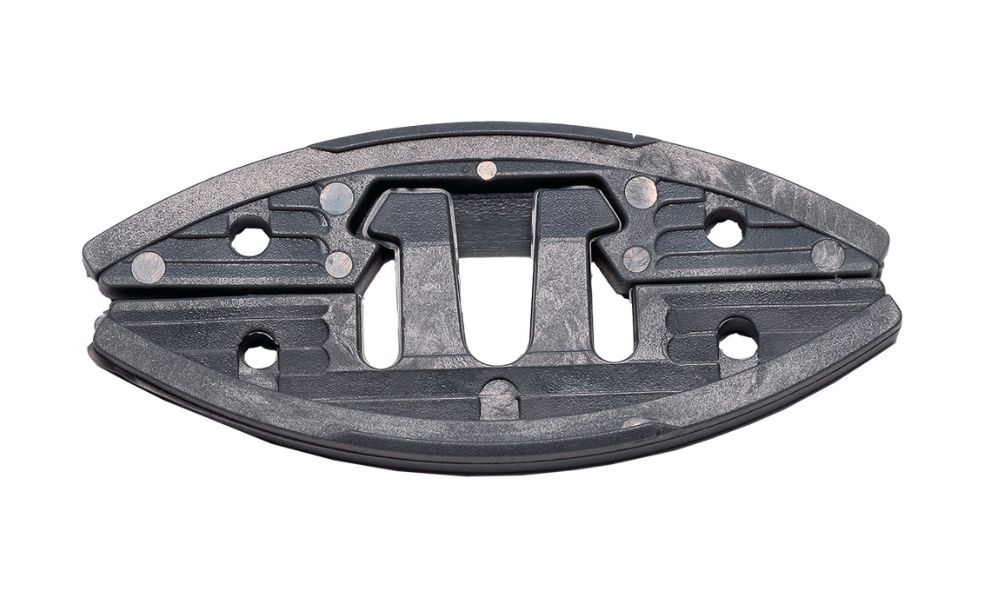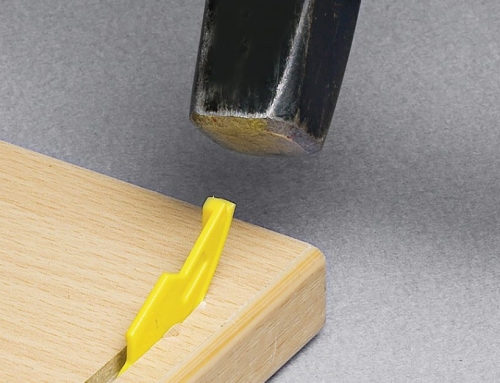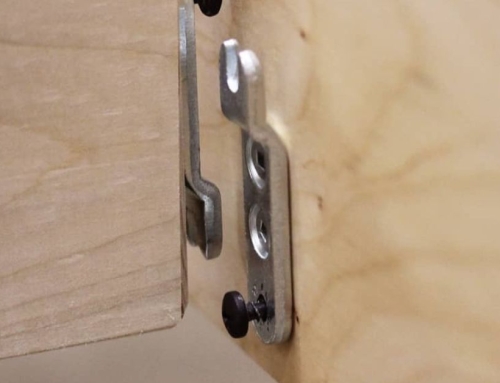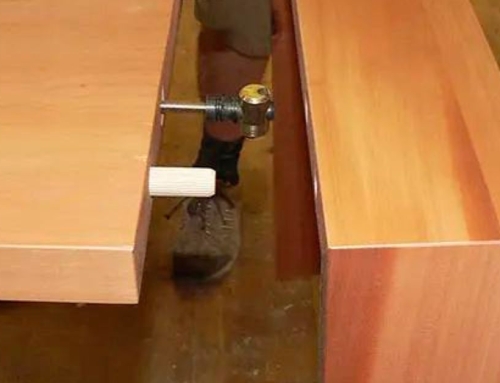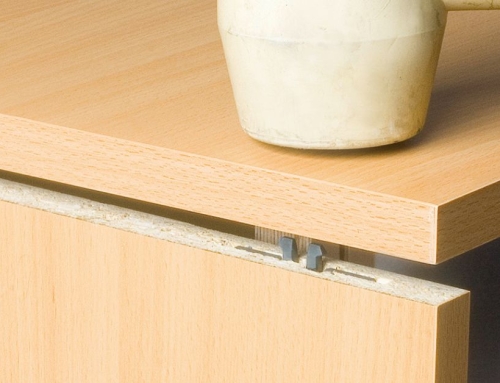Whether you’re new to woodworking or a professional in need of a few new tips, Knapp Connectors is here to inform you about the fundamentals of using biscuit joints. When it comes to the craft of woodworking, you may know a million and one ways to connect pieces of wood together, but what’s the best method? From old-age techniques to using nails and screws galore, it’s not easy to find a durable and trusted technique.
While it’s up to you to decide what type of connector is the best, here’s the ultimate guide to using biscuit joints and why they’re still popular choices at Knapp.
What Is a Biscuit Joint?
A biscuit joint is typically an oval-shaped piece of compressed wood that’s a remarkably strong tool to keep your wooden structure together. You insert the biscuit joint into slots in the corresponding piece of wood. Once you glue it into the slot, it swells and locks the joint in place. However, the biscuit joints from Knapp Connectors only require hammering for the connector to stay in place—talk about innovation! Regardless, this woodworking tool is popular due to its aesthetic value. When installed correctly, it’s hidden, which creates a perfect seamless finish.
Typical Biscuit Joint Uses
You can use biscuit joints for any joinery task, but the most popular uses for these joints include the following:
- Joining wood at 90-degree angles
- Creating wooden furniture (table tops, desks, coffee tables, etc.)
- Joining thinner woods together
When Should I Use a Biscuit Joint?
As we stated before, biscuit joints are popular due to their ease of use and consistency. These joiners add strength to their structure, making it easy to achieve the seamless results you want. For example, if you want to build a table or bookshelf, you can easily do so with biscuit connectors.
These joiners allow you to create a consistent and parallel layout without spending hours measuring and cutting. This form of connecting is also popular when creating tabletops because they’re a quick solution to aligning the legs and edges of the board.
Different Joint Sizes
Biscuit joints come in many different sizes and depths, depending on what’s necessary for your project. You can also make your own to accommodate your measurements. However, the most common biscuit joint sizes are as follows:
- #0: 5/8 inch by 1 3/4 inches
- #10: 3/4 inch by 2 1/8 inches
- #20: 1 inch by 2 3/8 inches
If you’re creating your own biscuit joints, you should check the biscuit joiner to help accommodate your depth settings. With a few twists at the knob, the machine will correct the blade to the appropriate depth. You will know it’s at the right depth measurement if the tool is snug around the wood. You can also adjust the height and get a consistent measurement of thickness by adjusting the fences. All you need to do is twist the dial to get a clean cut across all wooden boards.
However, if you’re not sure what size you need, don’t worry! Knapp Connectors has you covered. We offer a sample pack of biscuit joints to find the best size for you. Our connectors also come in different materials for a more durable and snug fit.
Common Types of Biscuit Joints
While most wood projects are assembled once and forever, there’s a wide variety of knockdown hardware available for woodwork and other crafting projects. This type of hardware is designed for repeated assembly and disassembly. So, if you make a mistake, you can quickly fix it.
Biscuit joints are a popular type of knockdown hardware that craftspeople and woodworkers use frequently. Below are popular biscuit joint styles due to their strength and durability.
Edge-to-Edge Joints
Every professional woodworker knows that wood end grain doesn’t hold well in solid wood. This is because it soaks up the glue and creates an easy-to-break joint. This is when edge-to-edge biscuit joints come to rescue the day. These joints can help reinforce strength by increasing the surface area for glue. You typically use this technique when you’re creating tables, benches, dressers, or wooden towers.
Miter Joints
Biscuit joints and miter joints are a match made in the heavens of woodworking. This pairing is ideal for those creating door or window castings, picture frames, and other basic angled wood projects. By using biscuit and miter joints, you have more room to add more adhesive to the surface. This will allow you to get a stronger and more durable hold.
Butt Joints
Could you imagine your coffee table falling apart after a few uses? While this joint may not have much support from the bottom, it can prevent pieces from separating, which is essential for building strong structures. Biscuit joints can strengthen the end-to-end butt joints. With a little glue and reinforcement, the joint has more than the wood to stick to.
Double Joints
When your structure needs heavy-duty strength, that’s when double joints come in. A double biscuit joint occurs when you cut two slots instead of one and install two biscuit joints. This allows the joints to swell double the size and reinforce the load. However, this trick isn’t just good for strength; it’s also a great way to structure trim work, bookshelves, and more.
Why Use Biscuit Joints From Knapp Connectors?
The priority of Knapp Connectors is to cut down on the labor, time, and energy it takes to build wooden structures. Woodworkers tend to use biscuit joints because they’re a faster way to connect pieces of wood than most traditional methods. For those who want to build a project that’s durable and not have to worry about glued joints breaking, you should consider using biscuit joints from Knapp Connectors.
We take pride in our innovative joiners and offer sample packs to those who aren’t sure what size or type of biscuit joiner they need. And as we mentioned, no glue is necessary! All you need is your hammer. Don’t hesitate to browse through our website to find the connectors you need. And for more information, contact us!
At Knapp Connectors, we always want to inform our readers and fellow craftspeople about the practices and tools necessary to create lasting pieces. Through our ultimate guide to using biscuit joints, we hope that you gained the knowledge you needed to get the right supplies and tools to create your wooden structure.


